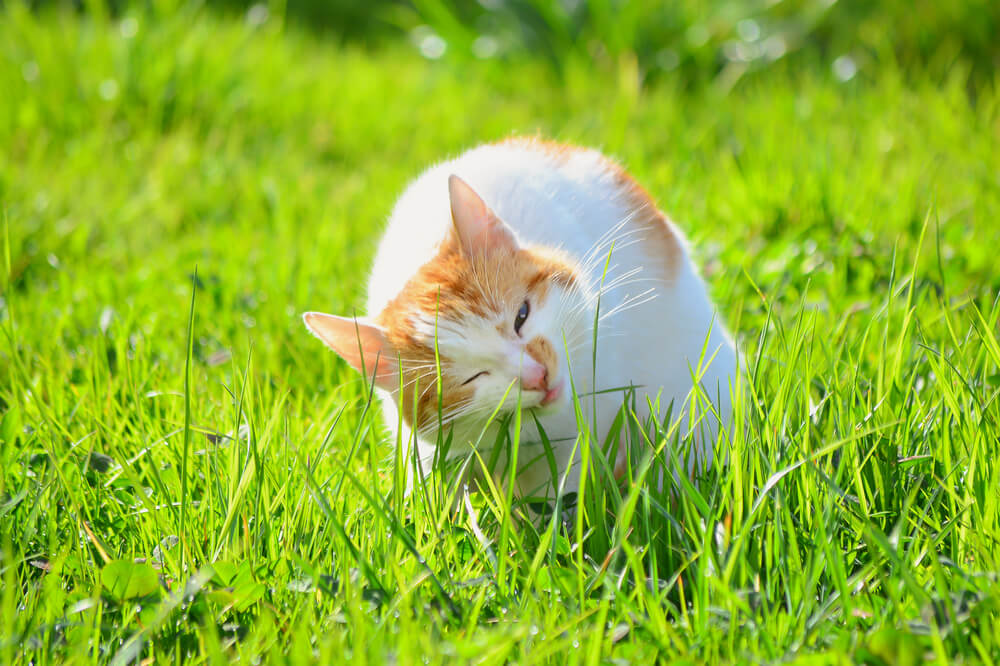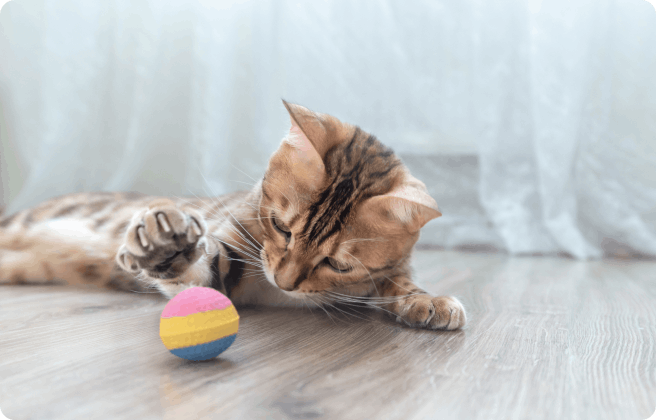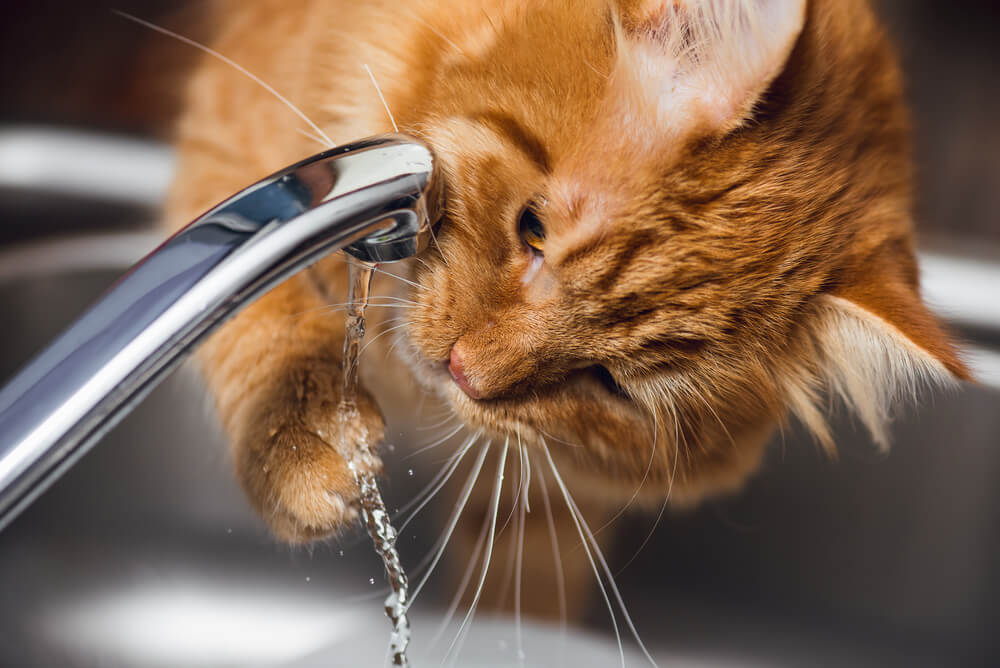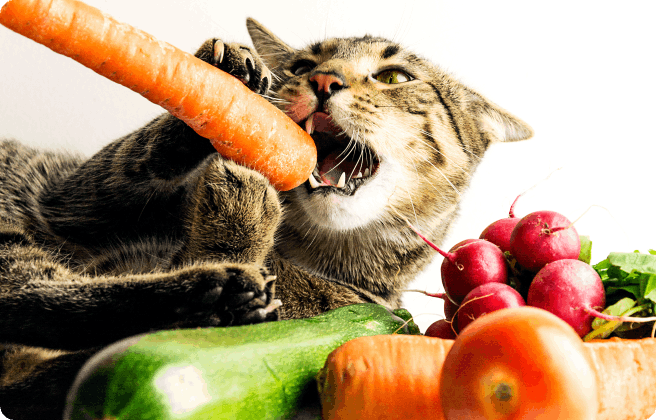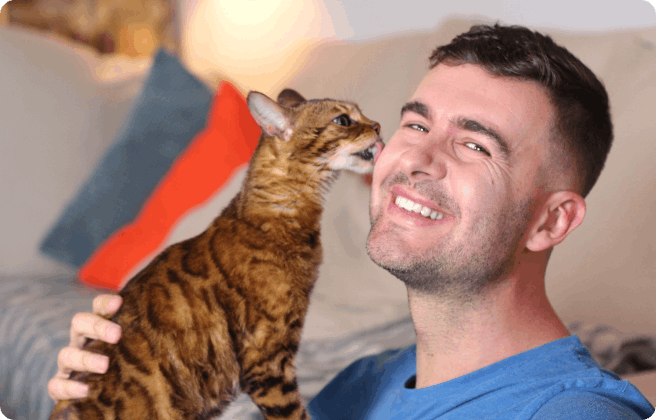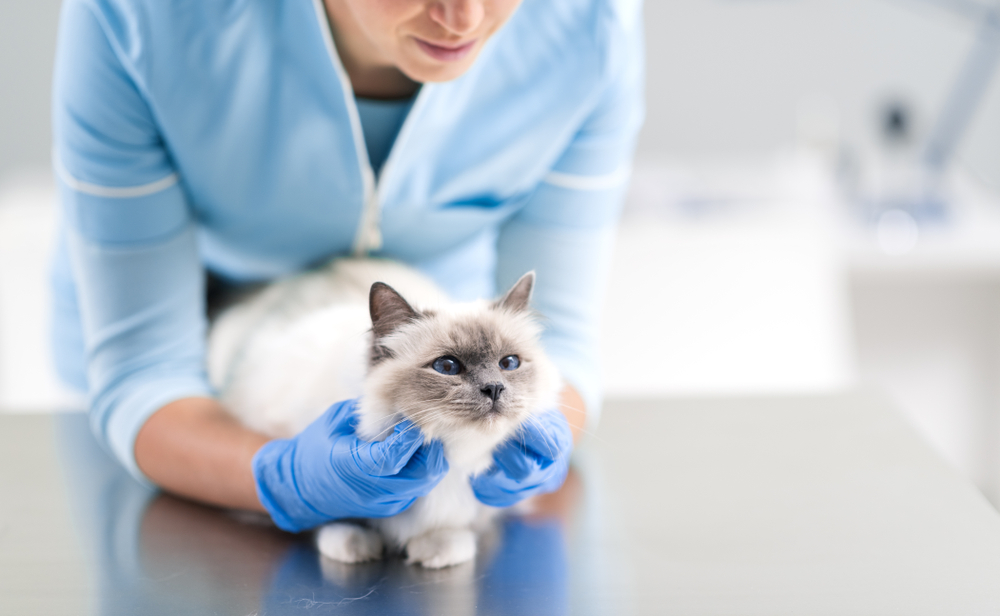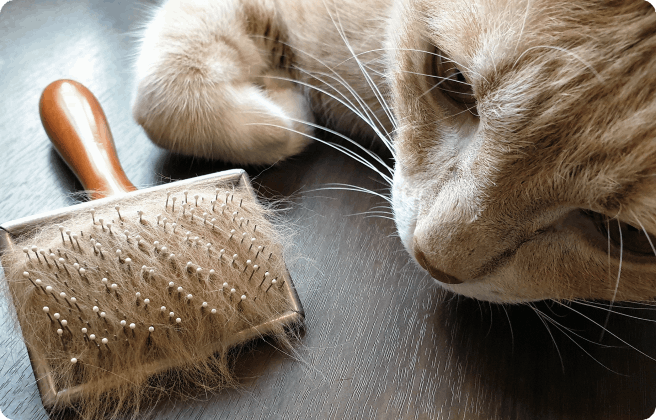
Cats are famous for their cleanliness and some are thought to spend up to half of their waking hours grooming themselves. Given they have such high standards when it comes to their personal appearance, the sight of dandruff (white skin flakes) on their fur should be a cause for concern.
As well as being unsightly, dandruff is usually a sign a cat’s skin isn’t in the healthiest of states. Why so? Well, there are a fair few reasons — ranging from mobility issues to dermatological complaints — but fortunately, there are usually solutions to the problem.
What are the causes of feline dandruff?
Unfortunately, there’s no single reason why a cat has dandruff, which makes it tricky to treat. There are some common explanations, however — here are just a handful.
Dry skin:
Just like humans, cats can experience dry skin. Dry indoor air, low humidity levels, and certain weather conditions can contribute to the drying of the skin, leading to dandruff.
Inadequate grooming:
Cats that have difficulty grooming themselves due to obesity, arthritis, or other mobility issues may not be able to distribute the natural oils from their skin properly. This can result in dryness and dandruff.
Allergies:
Cats can develop allergies to various environmental allergens, including certain foods, pollen, dust mites, or household chemicals. Allergies can cause skin inflammation and dryness, leading to dandruff.
Parasites:
External parasites like fleas or mites can irritate the skin, causing itching and dryness. Scratching or excessive grooming in response to these parasites can further contribute to dandruff.
Underlying skin conditions:
Certain skin conditions like seborrhea, dermatitis, or fungal infections can cause dandruff in cats. These conditions may be accompanied by other symptoms like redness, itching, hair loss, or skin lesions.
Poor nutrition:
Inadequate nutrition or an imbalanced diet lacking essential fatty acids can affect the health of a cat’s skin and coat. This can lead to dryness, flakiness, and dandruff.
Stress or anxiety:
Cats experiencing stress, anxiety, or changes in their environment can develop dandruff as a result of hormonal imbalances and altered grooming behaviors.
Look out for other worrying symptoms happening at the same time — itchiness, fur loss or a change in appetite, for instance — which will help build a rounder picture for your vet.
What to do if your cat has dandruff?
Contact the vet
If you spot dandruff on your cat, it’s no overreaction to give the vet a call straight away. They’ll be able to identify the correct cause and provide the necessary treatment to get your cat’s skin back in prime condition, whether that requires creams, antibiotics or antifungal medicine to do so.
At the same time, allergy sufferers often find their cat’s discarded skin cells trigger their symptoms, so in this scenario, a swift resolution is best for everybody involved.
Home care
There are some home remedies cat parents can use to look after a pet’s skin. They can lend a hand with grooming by brushing their cat’s coat to remove the dead skin and dirt that’s building up, while also distributing natural oils throughout the coat.
The right diet for a cat is also important, as healthy skin needs a range of nutrients and minerals. Many cats also don’t drink enough water, which can have a detrimental impact on their skin. This is why some vets recommend incorporating wet food into a cat’s meal routine to boost hydration.
Something else to bear in mind is the air inside your home. An excessive amount of pollutants, such as cleaning chemicals or cigarette smoke, may play havoc with your cat’s skin. Alternatively, dry air might act as an irritant and the introduction of a humidifier into the room in which your cat spends most of their time could add a bit of welcome moisture.
Just as in humans, dandruff in cats is an unwelcome but ultimately harmless condition by itself, but is a visible symptom of a deeper problem in some cases. As there are so many possible causes, it might take a bit of trial and error to find a solution but with a bit of veterinary help, it can soon be a problem of the past.
We uphold the highest editorial standards when creating the authoritative content pet parents rely on and trust.
Every piece of clinical content on the Cat Food Advisor is reviewed by our certified Veterinary Advisory Board, which consists of licensed veterinarians and medically certified specialists.
Our reviews are completely independent; we are not paid by any pet food company to promote their products favorably. We do not accept money, gifts, samples or other incentives in exchange for special consideration. For more information see our Disclaimer & Disclosure page.




